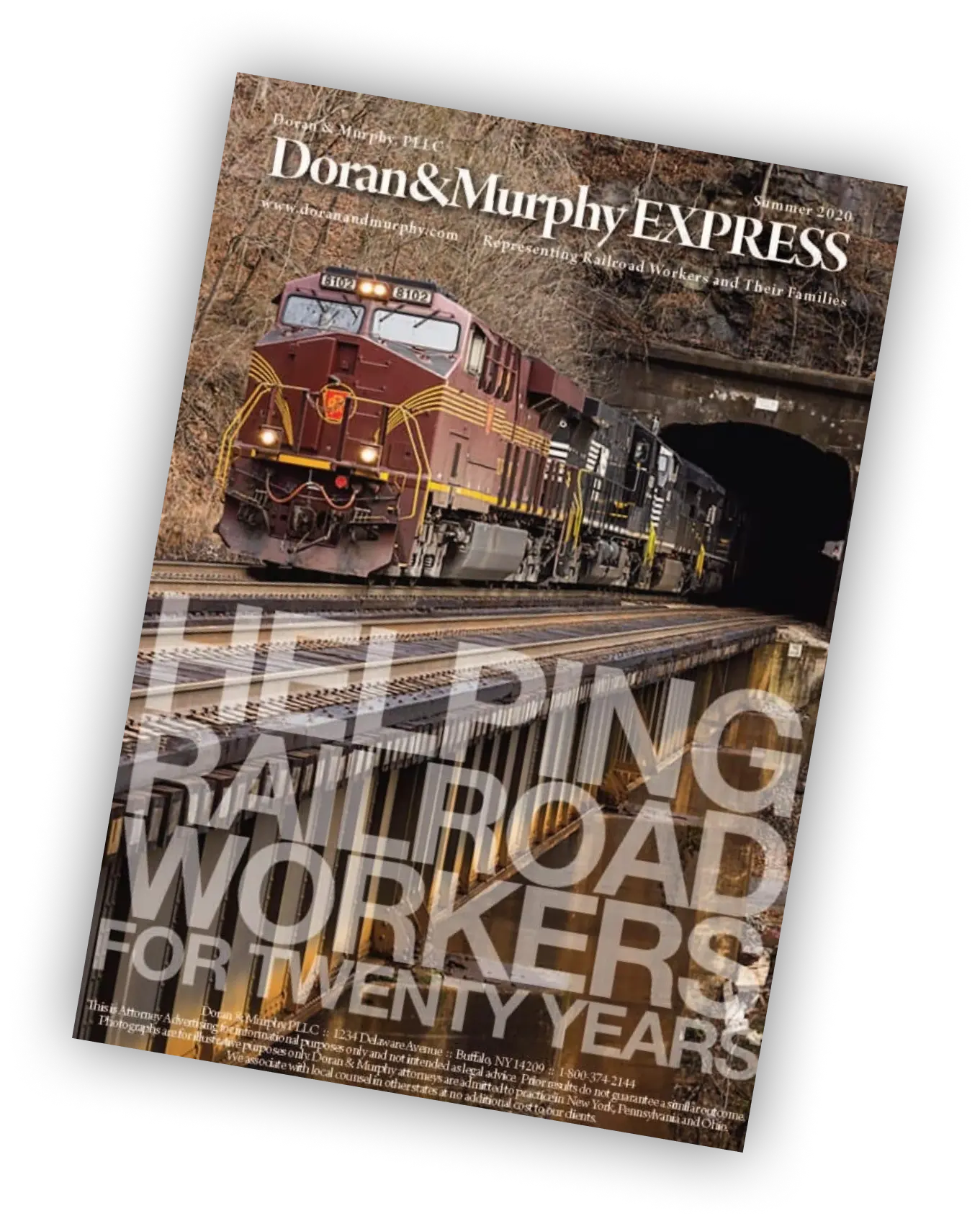
Railroad conductors work in busy rail yards and on trains that move freight and passengers all over the country, 24 hours/day, 7 days/week. While many different jobs in the rail industry are dangerous, conductors (and especially freight conductors) are at significant risk for serious injury and death because of the very nature of their jobs. These risks come as no surprise to anyone who is familiar with the rail industry. Conductors work on and around large moving equipment. They are required to get on and off moving rail cars and locomotives. They work in all weather conditions. Conductors also have elevated cancer risks because of railroad workplace exposures to various cancer-causing substances.
The job hazards that railroad conductors face include:
1. Riding on moving equipment: Conductors often “ride the cut” on the sides of rail cars as these cars are being moved around freight yards and at work locations for industrial customers. Conductors have been seriously injured and killed while riding the cut as a result of falling off the car they were riding, being struck by close-clearance stationary objects or even being struck by other moving rail traffic. Serious injury and death are often the result.
2. Getting on and off moving equipment (GOOME): It was not that long ago that certain railroads had rules requiring that locomotives and rail cars be stopped before workers could get on and off of them. However, Precision Scheduled Railroading (PSR) and the railroads’ relentless pursuit of profits have changed that. Workers now regularly get on and off moving equipment. As a result, many workers are injured due to irregular and shifting ballast on the ground which they encounter when mounting or dismounting cars and locomotives. The injuries can range from sprains, to fractures, to amputations and even death. Additional details on GOOME can be found in another blog here.
3. Slips, trips, and falls: Conductors are often required to get on and off the train multiple times per day. They can walk for long periods in rail yards and sidings. Many past clients have been
4. Setting and releasing handbrakes: Handbrakes are not always well maintained. Sometimes they get stuck or bind up and the result can be catastrophic for a conductor. Many of our clients have been hurt by handbrakes, suffering neck injuries, back injuries, disc herniations, and shoulder/rotator cuff tears and injuries. The good news is railroad conductors who are injured when operating handbrakes have the benefit of the Federal Employers Liability Act and the Safety Appliance Act which allow for compensation when a faulty handbrake causes injury. Additional information about the Safety Appliance Act and defective handbrakes can be found here.
5. Working in all weather conditions: Conductors work in both sub-zero temperatures and extreme heat conditions. They are at risk from frostbite when they have to walk a long train in wintertime and heat exhaustion and dehydration while switching rail cars in the extreme heat of summer. They may have to walk through the snow when inspecting trains, both in yards or out on the road after unexpected emergency braking applications. All of these weather conditions mean there is a high risk of injury. These situations are foreseeable and the railroads have an obligation under the law to provide a safe place to work and protect against them.
6. Exposures asbestos, diesel exhaust, silica sand, and second-hand tobacco smoke: Conductors have been exposed to hazardous substances that cause all different types of cancer (mesothelioma, lung, bladder, throat, colon, kidney, stomach, and others) even years and decades after the exposures stopped. Training and education for conductors was often lacking, and breathing protection was not regularly provided. Not surprisingly, published studies have found elevated cancer risks for railroad conductors and engineers. The railroad cancer lawyers at our firm have uncovered strong evidence about all the ways the nation’s railroads failed to protect workers from cancer hazards.
If you are a conductor who has been injured while working for the railroad, contact the railroad injury lawyers at Doran and Murphy today at 1-800-374-2144 to discuss your legal rights to compensation.





